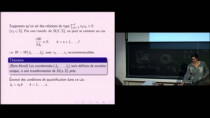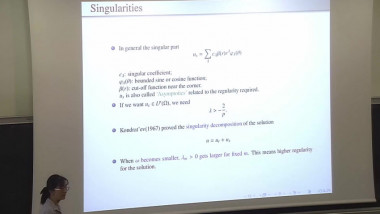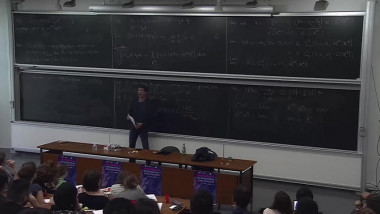Poincaré inequalities in probability and geometric analysis
Some of the most famous works of Henri Poincaré have been motivated by the problem of the stability of the Solar System. Indeed, since its formulation by Newton, this problem has fascinated astronomers and mathematicians, searching to prove the stability of the Solar System. Poincaré demonstrated that the perturbative methods of the astronomers could not be used to provide an answer to the problem of stability on infinite time because the series that were used are in general divergent. At the same time he believed that the dissipative terms would be of larger importance than the conservative neglected terms, leading to a stable final state for the Solar System. In the following of the work of Poincaré, KAM theorems have provided new hopes for mathematicians to prove the stability of the Solar System. On the opposite, the recent numerical works on realistic models of the Solar System show that the system is unstable in the strong sense and that planetary collisions are possible within the lifetime of the Sun.
Note(s) Biographique(s) : Ancien élève de l'ENS Cachan, J. Laskar a effectué sa thèse à l'Observatoire de Paris. Il est Astronome à l'Observatoire de Paris, directeur de recherche au CNRS. Il est membre de l'Académie des sciences et du Bureau des Longitudes. Pour son travail, il a reçu la médaille d'argent du CNRS et le Prix Brouwer de la "Division of Dynamical Astronomy" de l'"American Astronomical Society". Il se consacre principalement à l'étude de la dynamique des systèmes planétaires. Il a obtenu les solutions les plus précises pour le mouvement des planètes sur plusieurs dizaines de millions d'années, solutions utilisées pour l'étude des climats du passé. Au cours de ce travail, il a montré que le mouvement orbital des planètes du Système solaire est chaotique, avec une divergence exponentielle des orbites d'un facteur 10 tous les 10 millions d'années. Il a montré que les perturbations planétaires créent une large zone chaotique pour le mouvement de l'axe de rotation de toutes les planètes terrestres. Sans la présence de la Lune, l'axe de la Terre serait très instable, et pourrait varier de 0 à 85 degrés. Il a également montré que l'axe de rotation de Mars est chaotique, et peut varier entre 0 et 60 degrés, induisant de fortes variations climatiques sur sa surface. J. Laskar est maintenant largement impliqué dans la caractérisation des systèmes planétaires extrasolaires.













![[1242] Réfutation de la conjecture du télescope de Ravenel](/media/cache/video_light/uploads/video/SeminaireBourbaki.jpg)


